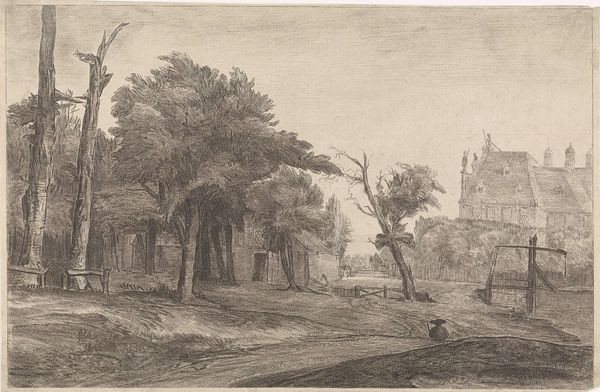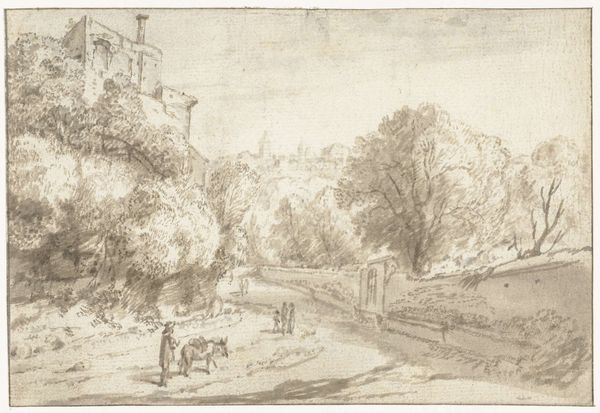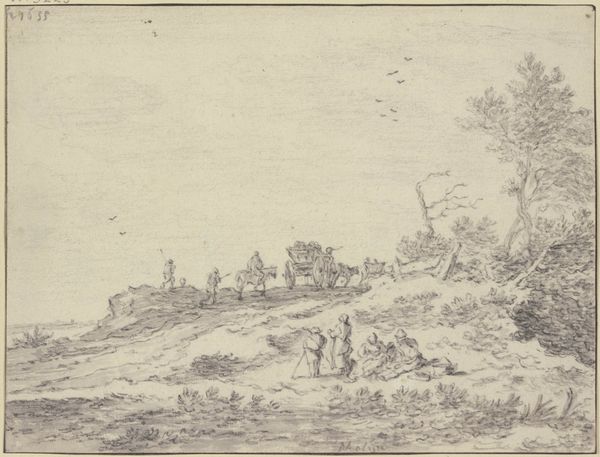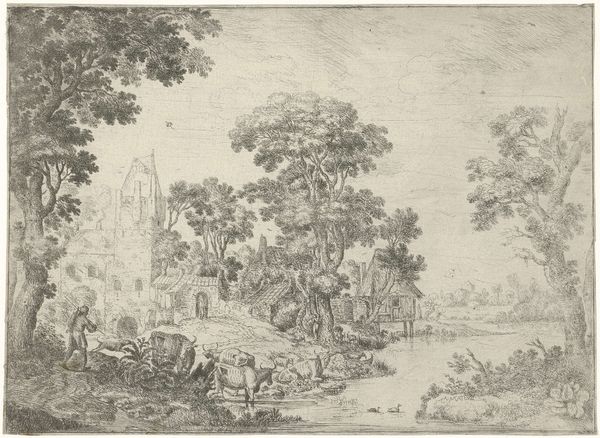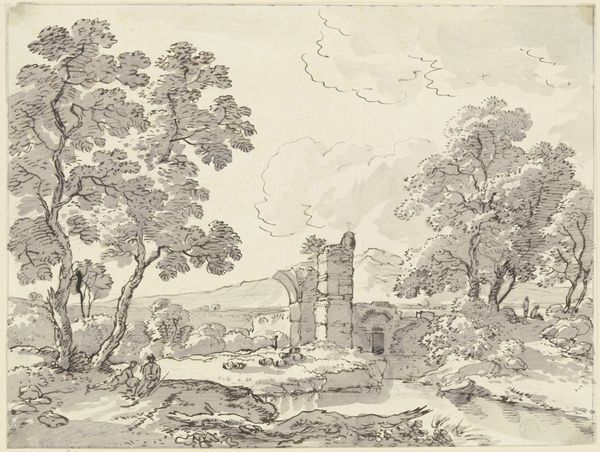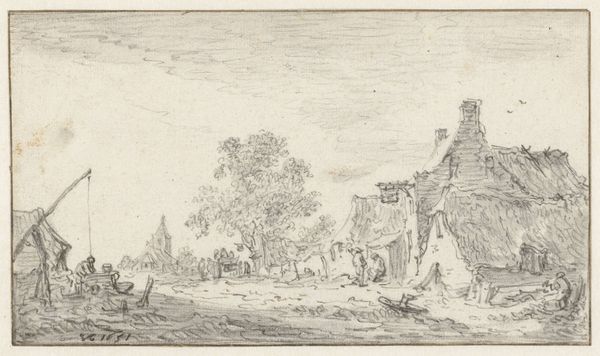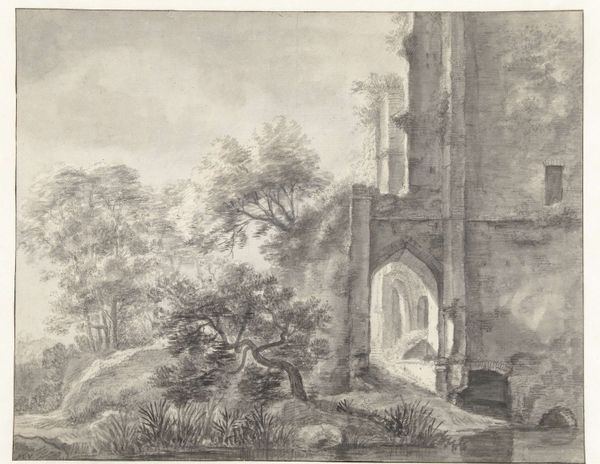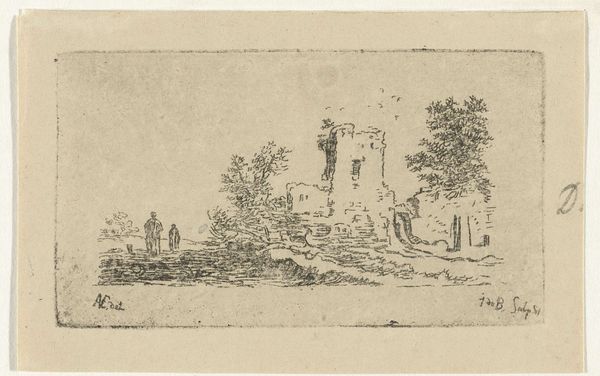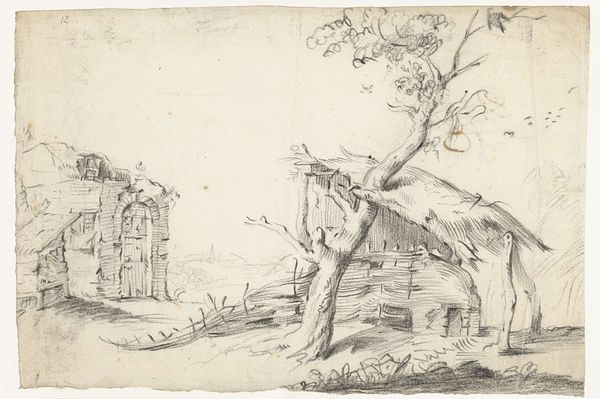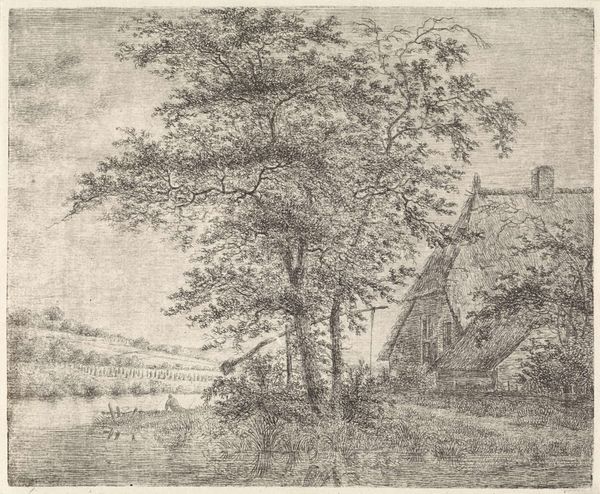
drawing, ink
#
drawing
#
dutch-golden-age
#
pen sketch
#
landscape
#
ink
#
history-painting
Dimensions: height mm, width mm
Copyright: Rijks Museum: Open Domain
Curator: Looking at Adriaen Hendriksz. Verboom’s work titled "Ruïne van kasteel aan het water," created between 1637 and 1673, a pen and ink drawing. The decay in the castle invokes such somber sensations within me. Editor: It certainly has a melancholic feel. The ruins are veiled behind foliage that makes you ponder: whose memories still reside among these decaying bricks? What social relations supported such constructions of wealth and power? Curator: These landscapes depicting ruins became immensely popular during the Dutch Golden Age. As newly prosperous merchants gained prominence, art shifted toward glorifying the tangible elements that fueled the empire’s development, like architectural structures and cultivated natural resources. Verboom subtly nods to the decline of aristocracy as merchants come to the fore. Editor: Right, there’s this fascinating interplay between progress and ruin that encapsulates anxieties about power, about cycles of prosperity and decline during a time of social transformation. This drawing depicts that struggle in miniature as both forms work together within Verboom's artistic conception. What do you notice in its composition? Curator: The composition's layering is striking. Verboom strategically placed the ruins partially obstructed from view to emphasize the tension between past glory and nature reclaiming it. The ink strokes add another important texture to his art piece. The marks feel deliberate, imbuing an organic essence to an otherwise somber image of fading authority. Editor: And that’s very telling, isn't it? The landscape becomes an active agent that simultaneously commemorates and slowly erases. Considering these depictions of abandoned architectural structures offer us glimpses into evolving class power, could that idea challenge modern conventions, or are some concepts timeless? Curator: Perhaps the cyclical theme itself, rather than simply glorifying structures, poses challenges. These ruinous architectures stand as potent reminders that the contemporary focus on continuous economic progress remains intrinsically tied to concepts of impermanence or deconstruction. Editor: Verboom seems to suggest these cycles are inescapable social functions! Well, engaging with Verboom's delicate exploration provides invaluable social and cultural perspective. Curator: I agree! Pondering the messages captured here in ink continues our necessary discussion on changing values.
Comments
No comments
Be the first to comment and join the conversation on the ultimate creative platform.
